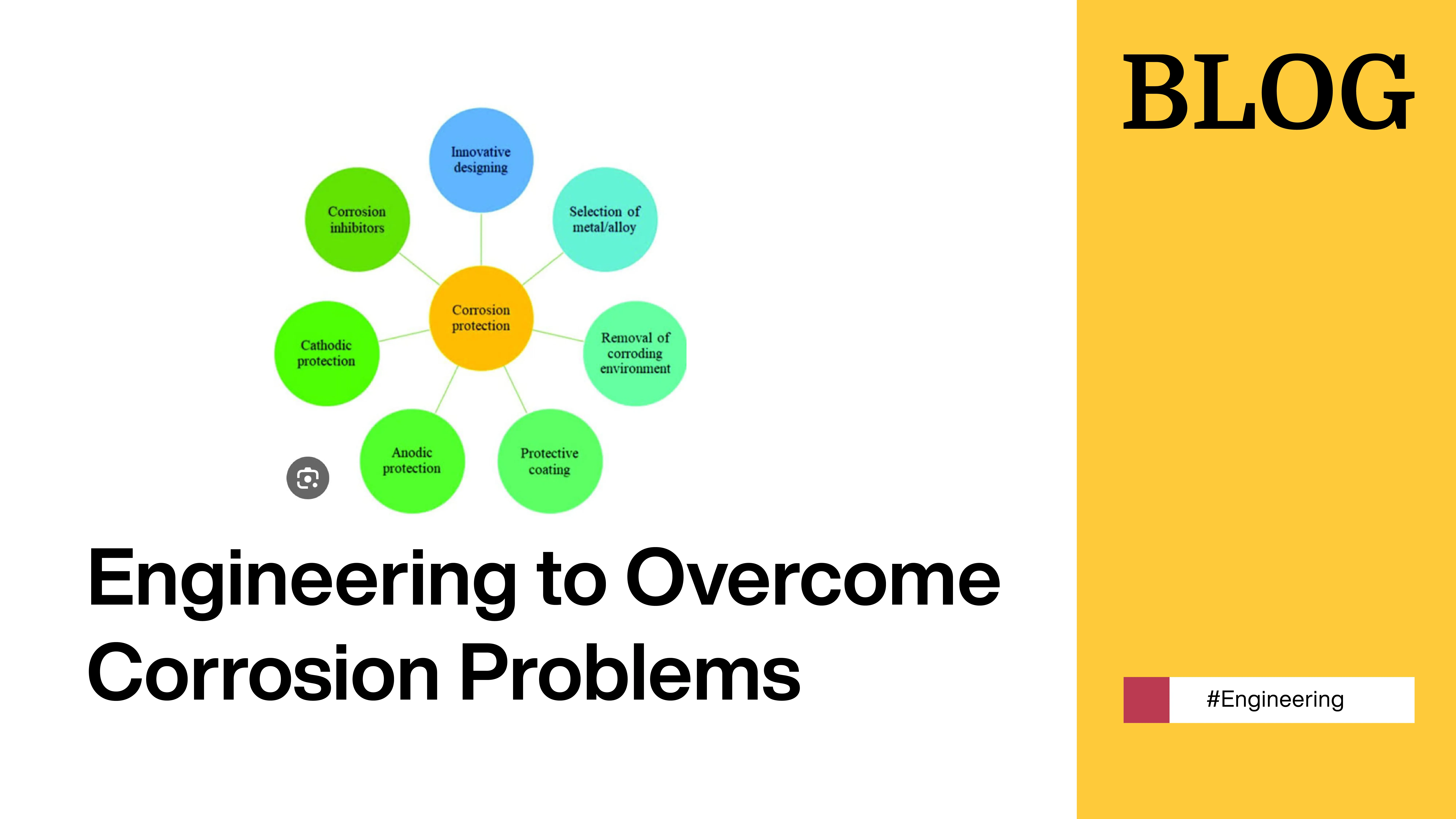Engineering to Overcome Corrosion Problems
Corrosion is a significant issue in engineering that can lead to structural degradation.....

Corrosion is a significant issue in engineering that can lead to structural degradation, reduced efficiency, and even failure of materials and components. Here’s a breakdown of its contribution to engineering problems and potential solutions:
Contribution of Corrosion to Engineering Problems:
- Material Degradation: Corrosion causes gradual deterioration of materials, weakening their mechanical properties over time.
- Structural Integrity: It compromises the structural integrity of buildings, bridges, pipelines, and machinery, posing safety risks.
- Efficiency Reduction: In industrial processes, corrosion can reduce the efficiency of equipment, leading to increased energy consumption and maintenance costs.
- Environmental Impact: Corrosion products can pollute soil and water, impacting ecosystems and human health.
- Economic Costs: Addressing corrosion-related issues requires significant resources in terms of maintenance, repair, and replacement of affected components.
Solutions to Corrosion Problems:
- Material Selection: Choosing corrosion-resistant materials (e.g., stainless steel, aluminium alloys) appropriate for the environment and application can mitigate corrosion effects.
- Protective Coatings: Applying paints, metallic coatings (e.g., zinc, chromium), or organic coatings acts as barriers against corrosive agents.
- Cathode Protection: Using sacrificial anodes or impressed current systems to prevent corrosion by controlling the electrochemical reactions on metal surfaces.
- Design Modifications: Redesigning structures to minimize exposure to corrosive environments or improve drainage and ventilation can reduce corrosion rates.
- Monitoring and Maintenance: Regular inspections, corrosion monitoring techniques (e.g., ultrasonic testing, electrochemical methods), and proactive maintenance schedules help detect and mitigate corrosion early.
- Environmental Controls: Controlling the environment (e.g., pH control, temperature regulation) can reduce corrosive conditions in industrial settings.
- Education and Training regarding corrosion inhibitors: Ensuring engineers, technicians, and operators understand corrosion mechanisms and prevention strategies improve proactive management.
- Anodic protection: This is another way to protect metals structures from corrosion, by keeping all the real life practical situations into consideration.
Case Studies and Examples:
- Oil and Gas Industry: Pipelines are protected using coatings and cathodic protection systems to prevent corrosion from soil and moisture.
- Marine Structures: Ships and offshore platforms use sacrificial anodes and specialized coatings to withstand seawater exposure.
- Infrastructure: Bridges and buildings in urban areas are subject to corrosion from pollutants; coatings and maintenance are crucial for longevity.
In conclusion, addressing corrosion in engineeringinvolves a multifaceted approach integrating materials science, designconsiderations, and maintenance strategies. By implementing proactive measuresand continuously improving corrosion management practices, engineers canmitigate the detrimental effects and ensure long-term durability and safety ofstructures and equipment.Top of FormBottom of Form
Revolution by Upgraded Engineeringto combat corrosion
Corrosion and revolution in engineering canintersect in several intriguing ways: In each of these areas, the intersectionof corrosion and revolutionary engineering highlights the ongoing efforts toenhance durability, sustainability, and safety in various industries andinfrastructure projects.
- Infrastructure Resilience: Corrosion poses a significant threat to infrastructure like bridges and pipelines. Revolutionary engineering solutions include predictive modelling using AI and IoT to monitor corrosion in real-time, allowing for proactive maintenance and minimizing infrastructure downtime
- Environmental Impact: The revolution in sustainable engineering aims to minimize environmental impact, including corrosion's detrimental effects. Engineers are developing eco-friendly materials and coatings that reduce corrosion and extend the lifespan of structures.
- Energy Sector: In the energy sector, particularly with offshore oil rigs and wind turbines, corrosion can be severe owing to exposure to harsh environments. Revolutionary engineering designs include advanced corrosion-resistant coatings and materials that enhance durability and operational efficiency.
- Material Innovation: Revolutionary advancements in materials science have led to the development of alloys and coatings that resist corrosion more effectively. For instance, stainless steel revolutionized industries by offering high resistance to corrosion compared to traditional metals.
Urban Planning: Corrosion impacts urban infrastructure such as water supply systems and buildings. Revolutionary engineering practices incorporate corrosion-resistant materials and innovative maintenance strategies to ensure urban sustainability and safety.






